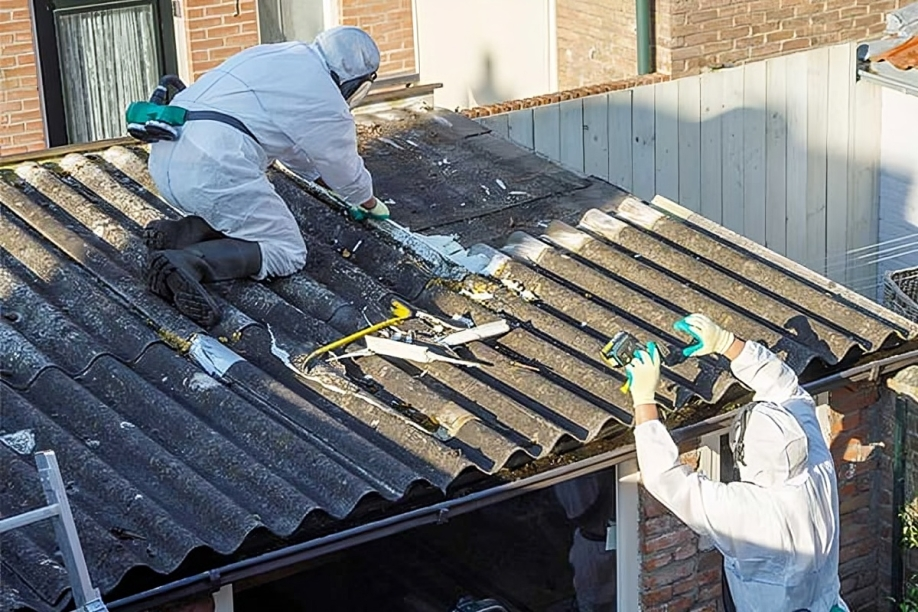Asbestos, once hailed for its fire-resistant and insulating properties, has become a notorious health hazard lurking in older buildings. Found in everything from insulation to floor tiles, asbestos is a hidden danger that, when disturbed, releases fibers into the air. Inhalation of these fibers can lead to severe health issues, including asbestosis, lung cancer, and mesothelioma. For homeowners and property managers, asbestos abatement isn’t just a precaution—it’s a necessary step in ensuring the safety of occupants.
This article delves into the importance of asbestos abatement, exploring what makes asbestos so dangerous, the critical steps in the abatement process, and why professional intervention is essential.
The Silent Threat: Why Asbestos Is Dangerous
Asbestos is a naturally occurring mineral composed of flexible fibers that are resistant to heat, electricity, and chemical corrosion. These properties made asbestos a popular material in construction and manufacturing throughout much of the 20th century. However, the very characteristics that made asbestos valuable are what make it so dangerous when it deteriorates.
Invisible and Deadly
- Fiber Release: Asbestos-containing materials (ACMs) are relatively safe when undisturbed. The problem arises when these materials are damaged or deteriorate, causing asbestos fibers to become airborne. These microscopic fibers are invisible to the naked eye and can remain suspended in the air for long periods, making them easy to inhale.
- Health Risks: Once inhaled, asbestos fibers can become lodged in the lungs or other tissues, where they cause inflammation, scarring, and, over time, serious diseases like asbestosis (a chronic lung condition) and various forms of cancer, including mesothelioma. The symptoms of these diseases often take decades to appear, making early detection and prevention crucial.
Recognizing the Signs: Is There Asbestos in Your Home?
Not every older building contains asbestos, but if your home was built before the 1980s, there’s a good chance it does. Knowing where asbestos might be hiding is the first step in addressing the problem.
Where Asbestos Lurks
- Insulation: Asbestos was commonly used in insulation for pipes, boilers, and attics due to its heat-resistant properties. Vermiculite insulation, in particular, is a well-known source of asbestos contamination.
- Flooring and Ceiling Tiles: Vinyl floor tiles, ceiling tiles, and the adhesives used to install them often contained asbestos. These materials can degrade over time or be disturbed during renovations, releasing fibers into the air.
- Roofing and Siding: Asbestos-cement products, including roofing shingles and siding, were used extensively in construction. These materials can break down due to weathering, making them a potential hazard.
Warning Signs of Asbestos Contamination
- Deteriorating Materials: If you notice crumbling insulation, cracked floor tiles, or fraying pipe insulation, there’s a possibility that these materials contain asbestos. Damaged or aging building materials are more likely to release fibers.
- Home Renovations: Renovations or demolition work can inadvertently disturb ACMs, leading to the release of asbestos fibers. If you’re planning to remodel an older home, it’s crucial to have an asbestos inspection first.
The Asbestos Abatement Process: From Discovery to Safe Removal
If asbestos is suspected in your home, the next step is to confirm its presence and safely remove it. Asbestos abatement is a highly regulated process that involves several key steps to ensure that asbestos is safely removed without contaminating the environment.
-
Inspection and Testing
- Professional Assessment: The first step in asbestos abatement is to have a professional asbestos inspector assess your property. They will take samples of suspected materials and send them to a laboratory for analysis.
- Determining the Scope: If asbestos is found, the inspector will determine the extent of the contamination and develop a plan for abatement. This plan outlines the specific materials that need to be removed, the method of removal, and the safety precautions that will be taken.
-
Containment and Preparation
- Sealing Off the Area: Before removal begins, the area containing asbestos must be completely sealed off to prevent fibers from spreading to other parts of the home. This involves using plastic sheeting and negative air pressure systems to contain the work area.
- Protective Gear: Workers wear personal protective equipment (PPE), including respirators and protective suits, to prevent exposure to asbestos fibers. This gear is critical to ensure that workers do not inhale fibers or carry them out of the containment area.
-
Safe Removal
- Wet Removal Methods: To minimize the release of fibers, asbestos materials are often wetted down before removal. This helps keep the fibers from becoming airborne and reduces the risk of contamination.
- Careful Handling: Asbestos materials are carefully removed, avoiding any actions that could break or damage them further. Once removed, these materials are placed in sealed containers that are clearly labeled as hazardous waste.
-
Disposal and Decontamination
- Proper Disposal: Asbestos waste cannot be disposed of like regular trash. It must be transported to a designated hazardous waste facility that is equipped to handle and safely dispose of asbestos-containing materials.
- Cleaning the Area: After removal, the work area is thoroughly cleaned and decontaminated. HEPA vacuums and specialized cleaning agents are used to remove any residual fibers, ensuring the space is safe for reoccupation.
-
Final Inspection and Clearance
- Air Quality Testing: Before the area can be declared safe, air quality testing is conducted to ensure that no asbestos fibers remain in the air. This final step provides peace of mind that the abatement was successful and the environment is now safe.
- Certification of Clearance: Once the area passes inspection, a certification of clearance is issued. This document is important for homeowners to keep, especially if they plan to sell the property in the future, as it provides proof that asbestos was properly removed.
Living Safely After Abatement: Ongoing Considerations
Asbestos abatement significantly reduces the risk of exposure, but it’s important to remain vigilant, especially if you live in an older home.
- Maintenance and Monitoring
- Regular Inspections: Even after abatement, it’s wise to conduct regular inspections of your home to ensure no new asbestos issues arise, particularly if the property has other areas with undisturbed ACMs.
- Safe Renovations: If you plan any future renovations, always assume there could be asbestos in undisturbed areas. Hire professionals to assess and handle any potential hazards.
- Staying Informed
- Awareness of Asbestos: Educate yourself about asbestos and its risks. Understanding where asbestos might be found and how to avoid disturbing it can prevent future exposure.
- Keeping Records: Maintain records of any asbestos inspections, abatement work, and clearance certifications. These documents are valuable not only for your safety but also if you decide to sell your property.
Conclusion: Protecting Your Home and Health
Asbestos abatement is a critical process that requires careful planning, professional execution, and ongoing vigilance. While asbestos is a dangerous material, the risks it poses can be effectively managed through proper identification, removal, and disposal. By taking the necessary steps to address asbestos in your home, you protect not only the structural integrity of your property but also the health and well-being of everyone who lives there.










